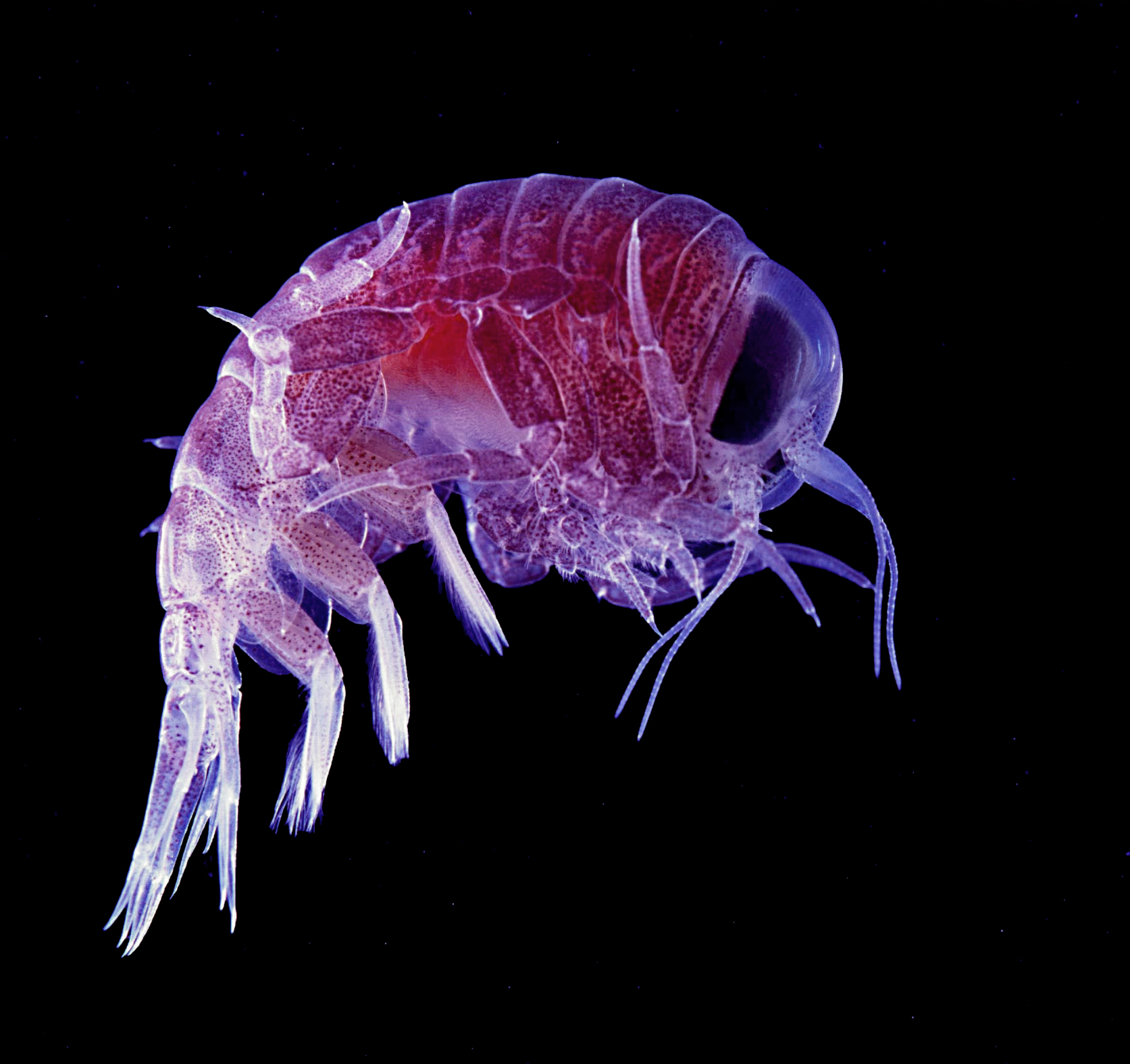Marine science is the study of organisms found in the ocean, from the deep waters of the Atlantic Ocean to small little animals living inside rock pools on the beach.
The study of these organisms can be broken up into:
– Marine Biology: The study of the animals and plants that inhabit our oceans
– Marine Ecology: The study of how these organisms interact with each other

A similar Amphipod was recently found on an expedition to the bottom of the ocean, image by Uwe Kils
The oceans are home to a huge range of organisms from the very small and microscopic phytoplankton and zooplankton (which may be less than a tenth of a millimetre), to the very large cetaceans (whales) that can grow up to a reported 48 metres in length.
The wide variety of habitats in the marine environment means that there is a huge amount of diversity in the marine organisms swimming our seas.
The deep seas are often considered one of the last unexplored regions of the Earth and are home to possibly thousands of new undiscovered species. Every year hundreds of new species are discovered by scientists exploring the oceans.

A green sea turtle, image by Mila Zinkova
Life has evolved in unique and interesting ways to survive in the hostile environment of the oceans – animals can be seen with strange protrusions to attract prey, unusual mating rituals and some very unusual looking creatures – especially in the very deep oceans.
Some animals have evolved bioluminensce and are able to produce light in tiny organs on their body called phytophores. In some, rather than helping the fish see in the dark, the light attempts to trick predator fish swimming below into thinking they are looking at the sky above through the sea, and not the belly of their next meal.
